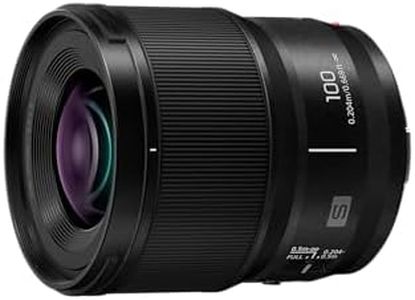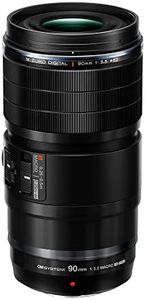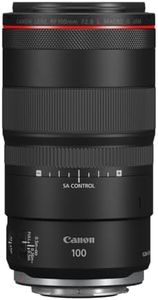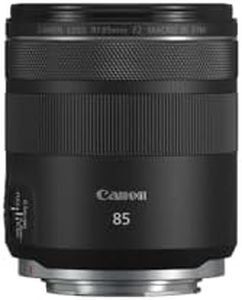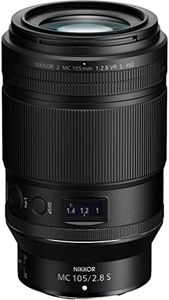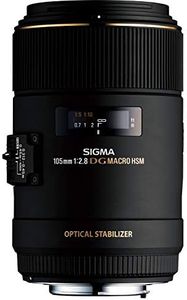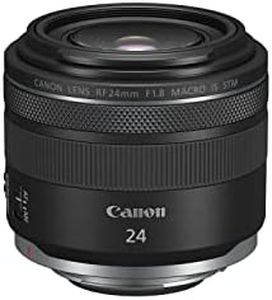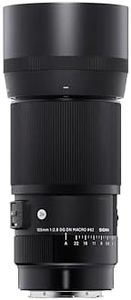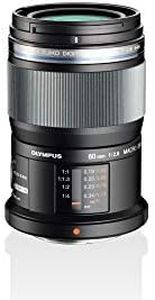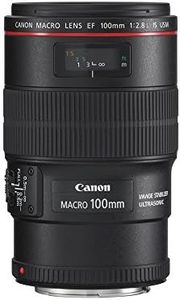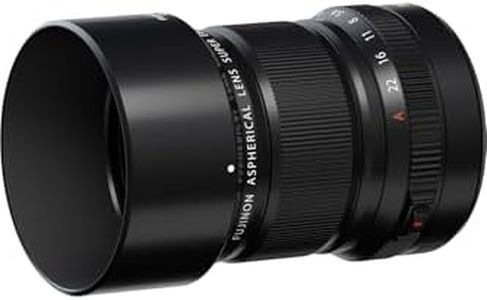We Use CookiesWe use cookies to enhance the security, performance,
functionality and for analytical and promotional activities. By continuing to browse this site you
are agreeing to our privacy policy
10 Best Macro Lenses
From leading brands and best sellers available on the web.Buying Guide for the Best Macro Lenses
Choosing the right macro lens is an exciting journey for anyone interested in close-up photography, whether you want to photograph insects, flowers, or small objects. Macro lenses are designed to capture fine details at very close distances, turning tiny subjects into large, sharp images. To find the best macro lens for your needs, you’ll want to consider how and what you plan to shoot, as well as how each feature or specification supports your creative goals.Focal LengthFocal length determines how much of your subject fills the frame and how far you can be from it while getting a full-sized close-up. Macro lenses often come in ranges like 50mm to 200mm. Shorter focal lengths (50-60mm) are lighter and better for larger subjects or when working very close, but you might cast shadows or disturb a living subject. Mid-range (90-105mm) offers a balance, letting you shoot a bit farther away and is suitable for flowers and insects. Longer focal lengths (150-200mm) let you keep more distance from the subject—helpful for skittish insects—but are larger and heavier. Choose based on what you want to photograph and how close you can get.
Maximum Magnification RatioThis spec tells you how large the subject will appear on your camera’s sensor compared to real life. A 1:1 (life-size) ratio means your subject appears the same size on the sensor as in reality, a must for true macro shots. Ratios like 1:2 mean half-life size, so you get less detail. For most macro enthusiasts, 1:1 is the standard, but if you’re photographing larger objects or don’t need extreme detail, 1:2 can be enough. Think about the size of your subjects and how much detail you want.
Minimum Focusing DistanceThis is the closest distance at which the lens can focus on a subject. A shorter minimum focusing distance means you can get very close and fill the frame with tiny details. However, being too close can make lighting tricky or scare off live subjects. Longer minimum focusing distances let you shoot from a more comfortable distance. Decide what feels natural for your style and subjects—less distance is useful for objects, more distance helps with insects.
Image StabilizationImage stabilization helps counteract hand shake, which is especially helpful when shooting close-ups, as movement is magnified. Not all macro lenses have this feature. If you like shooting handheld or in low light, a lens with stabilization reduces blur and helps you get sharp images. If you usually use a tripod, this feature might not be as important to you.
Autofocus and Manual FocusMacro photography often involves careful focusing, and macro lenses vary in their autofocus speed and ability. Some have fast, silent autofocus, while others focus more slowly but with precision. High-quality manual focus is important for very close work, so look for lenses with smooth, precise focus rings if you plan to adjust focus by hand. If you want to capture moving insects, reliable autofocus is helpful; for still subjects or studio work, good manual focus is key.
Aperture (Maximum f/Stop)The aperture controls how much light enters the camera and affects background blur. Macro lenses often have wide maximum apertures (like f/2.8), letting you shoot in lower light and create soft, out-of-focus backgrounds. Wider apertures make isolating subjects easier but also create shallow focus, which may make sharp focusing trickier. Choose based on whether you want artistic blur or need more of your subject in focus.
Build Quality and Weather SealingBuild quality affects how durable your lens is, while weather sealing protects against dust and moisture. For outdoor macro photography, especially in gardens or wild settings, sturdy construction and some weather resistance can be important. For indoor or studio use, this might matter less. Think about where and how often you’ll use the lens.
